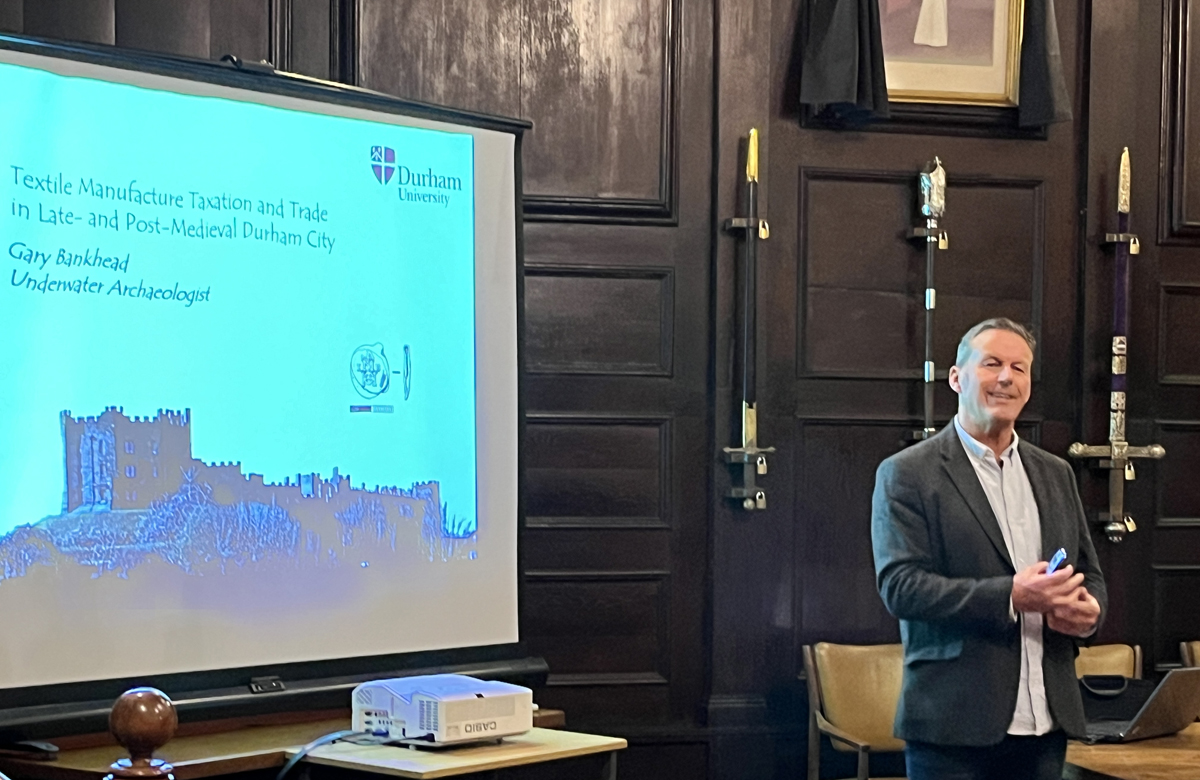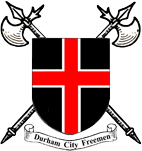Textile Manufacture, Taxation and Trade in Late- and Post-Medieval Durham City.

The first research based on objects recovered from the submerged riverbed positioned just downstream of the twelfth century Elvet Bridge in Durham City, has now been published. A 280-page colour hardback book, titled, ‘Textile Manufacture, Taxation and Trade in Late- and Post-Medieval Durham City is in print as anArchitectural and Archaeological Society of Durham and Northumberland Research Report in association with the Durham City Freemen and with support from the Finds Research Group. It represents an interdisciplinary study of 334 lead cloth seals which date from the mid-fourteenth to the early-nineteenth centuries.
These recently discovered objects, recovered by Durham-based underwater archaeologist Gary Bankhead, were once linked to the trade, industrial regulation, and taxation of commercially produced cloth. These small, enigmatic objects represent the largest assemblage of such material available for analysis outside of London and, as such, are of crucial significance for understanding the cloth trade during the period to which they have been ascribed; they connect the northern city to national and international trading networks and highlight previously overlooked and undervalued aspects of its textile activities.
At the heart of the book is a detailed typological catalogue of the 334 recovered lead cloth seals which describes not only their physical configuration but analyses the possible significance of the miniature symbols and initials inscribed upon them. These small identifying lead markers were once attached to the edges of woven fabrics as part of systems of quality control and alnage assessment, they enable an exploration of the economic and social aspects of textile production and consumption. These important objects represent the largest assemblage in England of such material outside London and are of crucial significance for understanding the cloth trade in the late- and post-medieval period. When combined with other objects related to textile working recovered from the same submerged site, they provide invaluable comparative material and reference resource for anyone studying historical textile and economic related activity on a local, regional, national or European scale. They also allow for parallels to be drawn with published archaeological finds, and other chance (metal detecting) finds.
Evidence from the cloth seals is combined with other documentary, cartographic and archaeological sources of evidence to produce a synthesis illuminating our understanding of the cloth trade in Durham City in the late- and post-medieval periods. The research generated by this study has showed not just the scale and extent of textile production in the city of Durham but has also revealed evidence of hitherto unknown English and European trade routes.
Supported by contextual evidence gathered from a wide range of textual and visual sources, ranging from pictures and maps to grave slabs, the lives, locations and shifting fortunes of those importing, producing, assessing and using textiles in Durham come into fresh focus. Most excitingly, scientific analysis of the tiny fragments of cloth which had survived, caught between the closed seals and lost for centuries but preserved in their underwater environment, provides exact evidence about the nature of some of these fabrics. Comprehensive scientific analysis of three such rare survivals, complete with striking Scanning Electron Microscope images, provides invaluable information about the dyed woven wool fabrics which were being traded in the city, corroborating and supplementing data on Durham’s textile trade connections.
For further information about the book and detail of how to order, see:
diveintodurham.uk/publications
ISBN 978-1-7391074-0-6




